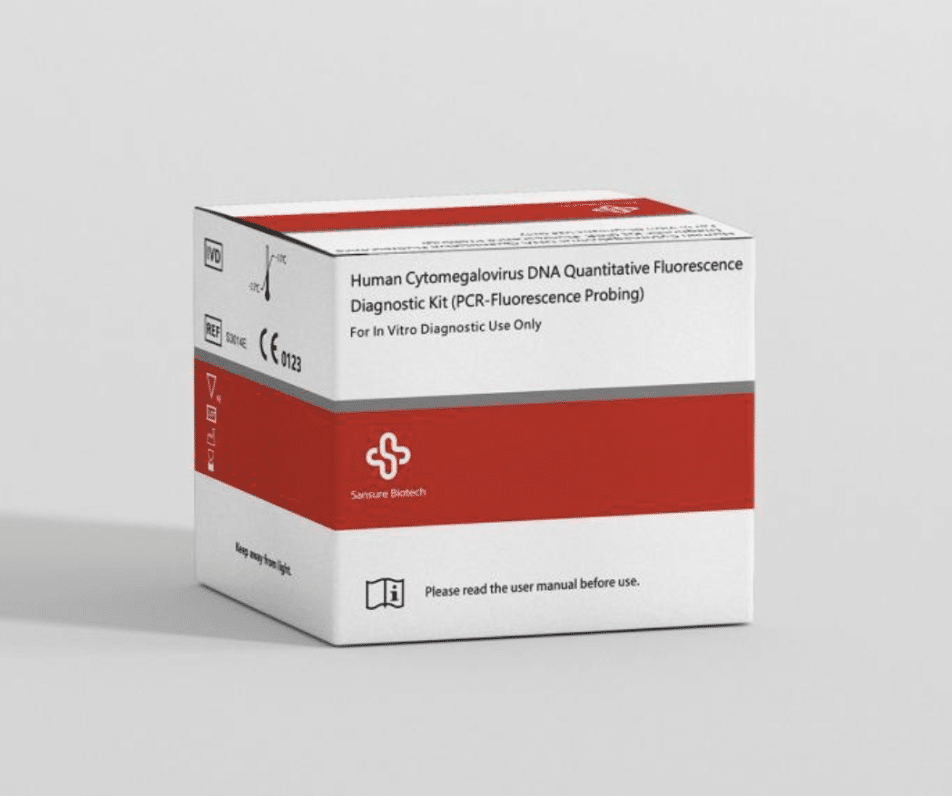Cytomegalovirus (CMV) is a commonly seen virus that belongs to the herpes family[1]. Due to its prolonged latency, the virus is almost always asymptomatic, which makes it easily transmissible but hard to diagnose. But how do we know that we have contracted the virus? Are there any reliable tools for CMV diagnosis? Join us as we discuss these details in the following article.
Why is CMV Diagnosis and Screening Important?
For healthy individuals, contracting CMV is normal as it stays in the system without causing harm. Coming with a compromised immune system, however, the virus can reactivate and often lead to morbidity or even death. In addition to this, CMV infection in pregnancy causes congenital disabilities in newborns, the most common of which is sensorineural hearing loss[2].
According to the Division of Viral Diseases, CMV infects over 50% of adults by the time they reach the age of 40 and shows moderate to severe symptoms such as[3]:
- High Fever
- Sore throat
- Jaundice
- Muscle ache
- Skin allergy
- Abdominal pain
- Swollen lymph nodes
Sometimes, CMV can also cause hepatitis (liver inflammation) or mononucleosis (infection causing extreme fatigue and illness).
Considering these complications, CMV diagnosis is more than necessary, especially for pregnant women, cancer survivors, HIV patients, or people who have undergone organ transplantation therapies.
Causes and Transmission
CMV spreads through body fluids, such as semen, blood, saliva, urine, tears, or maternal milk. Primarily, people contract the virus through[3]:
- Direct contact with genitals
- Blood transfusions
- Coughing
- Organ transplants
Infants get this virus during their intrauterine life through vertical transmission. Put simply, when a pregnant woman contracts CMV, it crosses the placenta, causing adverse side effects in the fetus. Mothers harboring a latent CMV can also transmit the virus to the newborns through breastfeeding.
Babies with CMV are often born with[4]:
- Hearing loss
- Thrombocutic purpura (Blood spots under the skin)
- Jaundice
- Microcephaly (smaller head than usual)
- Hepatosplenomegaly (enlarged liver and spleen)
- CNS damage
- Impaired motor skills

CMV Diagnosis During Pregnancy
Most of the time, pregnant women experience a silent CMV infection with no visible signs, but when symptoms do start to show up, it can become life-threatening to both the mother and the child.
Hydrops fetalis is the most severe complication caused by CMV in pregnancy, where the fetus undergoes heart failure with a concerning amount of fluid accumulation around the abdomen or lungs. The situation also develops severe edema or skin inflammation and is the leading reason for spontaneous abortion or stillbirth among pregnant women[5].
When the fetus almost entirely develops later in pregnancy, vertical transmission has less likelihood of causing problems. However, CMV diagnosis is crucial in earlier stages of pregnancy as the fetus is weak and more vulnerable to acquiring congenital disabilities.
CMV Diagnostic Methods
There are several options to diagnose CMV infection during pregnancy. Some most common include[6]:
1. Serology
It is the most common test for CMV diagnosis, where the patient’s blood is collected through a needle to check for antibodies to the herpes virus. Although there is a slight risk involved with serological testing of CMV, the results can be unreliable due to lower sensitivity.
2. Biopsy
Biopsy testing is the diagnostic method for gastrointestinal infections where the patient’s tissue sample is taken from the edge of the ulcer. Thus, it’s not the right choice for CMV evaluation in newborns or pregnant women.
3. Nucleic Acid Amplification Test (NAAT)
NAAT is the standard, most reliable method for CMV diagnosis that uses the polymerase chain reaction for amplifying the HCMV DNA in urine, saliva, or peripheral blood samples.
For pregnant women, the existing serum or plasma is used for the testing, where the positive NAAT indicates a primary infection (when the body contracts CMV for the first time), which is more severe than the secondary infection (when CMV is already present in the body and develops immunity)[7].
The test is not common as of now, but is becoming increasingly popular due to:
- The short turnaround time
- A large number of screening for samples at lower costs
- Higher specificity for CMV
CMV Quantitative Flouresecne Diagnostic Kit Provided by Sansure
Sansure, a certified firm for genetic testing and innovative diagnostic technologies, has manufactured the Quantitative Flouresecne Diagnostic Kit for detecting human cytomegalovirus DNA. It works based on NAAT and uses a fluorescence probing technique to aid in CMV infection diagnosis within a few weeks after gestation. The kit provides you with:
- Rapid turnaround time of around 70 min
- Higher Sensitivity with 400 copies per ml of sample
- Applying advanced magnetic beads technology, ensuring its high yields of pure nucleic acids and better efficiency.

CMV Prevention and Treatment
To prevent CMV, you should:
- Follow a good hygiene
- Avoid direct contact with body fluids.
- Avoid sharing toothbrushes and other utensils
- Wash hands for 15-20 seconds
Antiviral medications are prescribed as a treatment to CMC-infected individuals, and dosages can vary depending on the severity of symptoms.
Conclusion
CMV, although asymptomatic, can become fatal for mothers and infants without early detection. In this regard, Sansure underlines the immediate need for CMV diagnosis, leading to early intervention and timely management of the viral infection before it aggravates to the point of no return.
Reference
[1] https://www.healthline.com/health/is-cmv-a-herpes-virus
[2] https://www.cdc.gov/cmv/hearing-loss.html
[3] https://www.cdc.gov/cmv/overview.html
[4] https://www.cdc.gov/cmv/congenital-infection.html
[5] https://partnersincare.health/conditions/cytomegalovirus-infection
[6] Ross SA, Novak Z, Pati S, Boppana SB. Overview of the diagnosis of cytomegalovirus infection. Infect Disord Drug Targets. 2011 Oct;11(5):466-74. doi: 10.2174/187152611797636703. PMID: 21827433; PMCID: PMC3730495.

